Their own fronting company, Meadowbrook's client captives owned 75 percent of Star, which became licensed in all 50 states. Later, it went public and commercial, becoming no longer captive-oriented. Many of them were agent-owned "captives." It's a model not copied by others but worthy of notice.
Captives Get Going
- Significant to Captives
- Major External Event
- Tax & Regulatory Matters
1985
An example of sudden change in capacity, $300 million down to $5 million, captive owners who remember cite Imperial Chemical Industries (ICI) as a reason for the existence of their captives in a period when the commercial insurance market appeared to restrict and refuse coverage from one moment to the next.
It was not the first, but the most public of captive failures, of which there have been very few. Mentor, the captive for Ocean Drilling and Exploration Company (ODECO), was brought down by writing unrelated business.
Property, then liability capacity crises occurred. Absence of capacity or outrageously high rates were the drivers for many captive formations.
They initially were group captives. XL wrote the $50–$100 million excess liability insurance layer and ACE wrote $100 million excess of $100 million. Championed by Marsh's Bob Clements in response to a lack of liability capacity, both were initiatives carried out by big brokers, sweeping away attempts by groups of insureds to form their own liability group captives. Three years later, they both had become commercial insurers, no longer captives, because they were owned by public shareholders, not insureds.
In this monthly captive publication, many read Hugh Rosenbaum's limericks because they summarized that month’s issue in five lines. The first one:
High risk is the name of the game
With a captive it's more of the same
The risk reward quotient
Keeps our money in motion
And nobody takes any blame!
They continued to appear in CICR for 12 years.
1986
Energy Insurance Mutual Limited (EIM) was organized by 17 utilities in Barbados in response to the liability insurance crisis, which made it impossible for nuclear utilities to buy directors and officers liability insurance without a nuclear exclusion. EIM moved its headquarters to Florida in 1988 but retained its Barbados domicile. Today, EIM writes general liability, directors and officers liability, and property insurance for about 165 utilities and others in the energy services industry. EIS, a subsidiary sponsored-cell company, moved from Bermuda to South Carolina in 2006 to facilitate self-management.

2,200
Captive Insurance Company Directory estimated that premiums were $7 billion, up from the previous year.
Created to cover directors and officers (D&O) liability for banks in response to the onerous exclusions AIG and others were adding to D&O policies, they included 50–60 major banks. After these two group captives began writing most of the bankers' insurance business, the commercial underwriters eventually relaxed their exclusions and copied some of the captives' specialized forms.
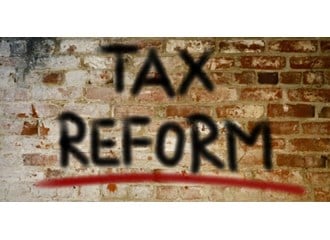
This Act seemed to remove almost all previous tax advantages of offshore captives. The definition of controlled foreign corporation (CFC) changed. Owners of group captives were obliged to declare their share of captive income, and loss reserves had to be discounted. Election by offshore captive owners to have their captives taxed as if in the United States (953(d)), an improvement over the more restrictive election (953(c)), was at first resisted. Nowadays the election is made by a majority of large captives. Related Person Insurance Income (RPII) rules reduce attractiveness of offshore domicile for group-owned captives.
This tax exemption for underwriting income of insurance companies with premiums of less than $1.2 million was created to help Midwest farm mutuals, but it would later stimulate the formation of micro or 831(b) captives.

The Consolidated Bathurst tax case was won by its Canadian captive owners. Deductibility was assured under separate entities argument as long as no parental guarantees, but didn't cut any ice with the IRS, though.
A group captive for captive owners to share liability risks, it was formed in Cayman by the Reiss Organization to emulate Hopewell in Bermuda for property risk sharing.
This was identified and listed in the Captive Insurance Company Directory.

Taxpayer lost the case, but unrelated business percentage was defined. It was 50 percent to make parent premiums deductible, a percentage that has stuck ever since, no matter that Gulf's captive, Insco, lost a lot of money later, the court said.
1987

2,680
Captive Insurance Company Directory estimated that premiums were $8.5 billion, up a lot.
A change was made to take advantage of the Risk Retention Act. Medmarc went from a group captive to becoming a commercial insurance company, a process many expected to see more of, but didn't.
There were 210-plus captives formed in the top 4 domiciles: Bermuda, Cayman, Vermont, and Barbados. This is a high watermark for captive formations following an insurance crisis, with about 350 formed that year worldwide.
In the years 1987-1991, AIG, Zurich, Centre Re, and others were offering them. Seemed like a good idea for higher-layer spread-loss programs for captives until the accountants restricted their advantages, and they went on to get a bad name in the early 2000s.
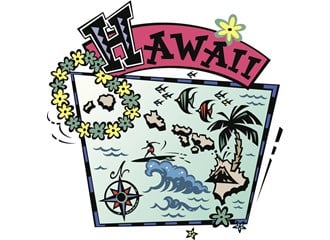
Their annual conferences attracted lots of delegates.
The losses ($507 million) far exceeded maximum foreseeable loss (MFL) estimate. Celanese's vapor-cloud explosion loss undermined reinsurers' faith in the Reiss Organization's captive insurance system and led ultimately to its having to sell out to Swiss Re.
This first attempt at captive standards, Generally Accepted Captive Standards (published by actuarial and consulting firm Tillinghast), was primarily about financial standards. It was referred to in subsequent editions entitled TRACS, Towers Watson Recognized and Accepted Captive Standards.
1988

2,800
Captive Insurance Company Directory estimate (counting system revised to exclude some entities that were not captives). Captive premiums estimated at $9 billion.
This was another pooling program for large owners of captives. This one grew and under its new name, Nexus, is still going strong.
1989

2,800
Captive Insurance Company Directory estimate, premiums $9 billion.

Taxpayer won deductibility based on "brother-sister" structure. Parent premiums are not deductible, subsidiary premiums are deductible. This is a big breakthrough for captive owners.
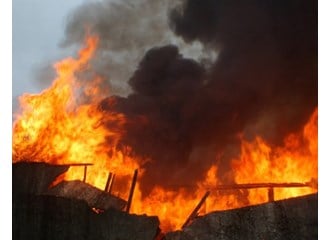
Another vapor cloud explosion, this time at a Phillips Petroleum Chemical Plant, resulted in losses of $1.4 billion. Many were killed and injured, and it represented a major loss for OIL.
1990

2,985
Captive Insurance Company Directory estimated (Business Insurance said 2,833 in 1991) that premiums were $9.5 billion. There was a slowing in the number of new formations.
National Association of Insurance Commissioners (NAIC) Model Act would have prohibited greater than 50 percent cession to captives. Strenuously resisted by lawyers and service providers, it took more than 2 years for it to "go away."
Held in New York City, it lasted nearly a week. Having tried Arizona and Florida, 25 years later, WCF settled on Florida and specializes in employee benefits programs in captives.
He set the model for captive regulators by persuading the Vermont legislators to treat captive regulators differently in pay, benefits, and oversight.
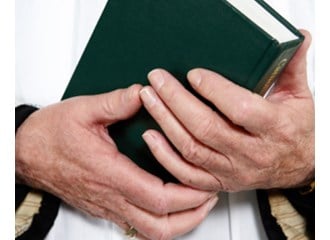
Felix Kloman’s first set was published. As one of the early writers about and proponents of captives, he tried to direct the onrushing tide of formations with a call to "get religion." Only a few did, though.
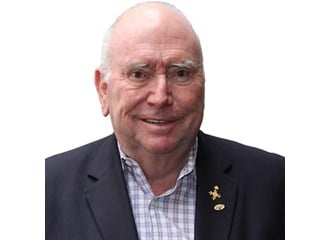
Johnson and Higgins' Brian Hall leads captive development in Bermuda, as largest manager of captives. His strict adherence to standards and insistence on educating local staff made him one of the bulwarks of that domicile's captive reputation. In 2018, very belatedly, he won Bermuda's top captive award, the Fred Reiss Lifetime Achievement Award.
1991

3,066
Captive Insurance Company Directory estimated that premiums were $10 billion, an increase in spite of soft market.

All three won by taxpayers: Harper Group v. Commissioner, 979 F.2d 1341 (9th Cir. 1992), aff'd, 979 F.2d 1341 (9th Cir. 1992); AMERCO v. Commissioner, 96 T.C. 18 (1991), aff'd, 979 F.2d 162 (9th Cir. 1992); Sears v. Commissioner, 96 T.C. 61 (1991), aff'd in part, rev'd in part, 972 F.2d 858 (7th Cir. 1992). The main conclusion for captives: 30 percent unrelated business might be sufficient to gain deductibility of parent premiums. They were a further setback for IRS's economic family.
A 3.6 percent tax increase passed in New York, one of many state increases. Most states now require self-regulation and payment of this kind of tax for premiums paid to non-admitted captives. Until 2014, many owners just ignored the requirement—not anymore, though.
1992

3,150
Captive Insurance Company Directory estimated premiums were $10 billion–$11 billion, a small increase from previous year.
Insurance and reinsurance surplus declined 15 percent overall. Reinsurance capacity reduced, and rates went up. Following this, new reinsurance capital flowed into Bermuda, Mid-Ocean Re being the first of them.
1993
First, property rates and then liability rates went up, while capacity went down. This led to growth of captives.
According to Swiss Re, 447 of the Fortune Global 1000 are identified as captive owners. Per CICR, 207 of the Forbes 500 companies are identified as owning captives.
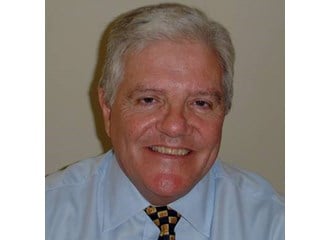
He was a proponent of Cayman regulatory improvements, winner of the CICA award, and was still actively arguing against attempts by the Organization for Economic Cooperation and Development (OECD) to bad-mouth captives.
This attacked "financial insurance" deals. Although only some captives were using this technique, the restrictions of FAS 113 influenced captive programs from then on.
1994

3,225
Captive Insurance Company Directory estimated that the premium volume was at $14 billion.
This event had a major effect on reinsurance capacity, leading to a decline in reinsurance capacity and fronting. Captive formation was a natural result.
Per CICR, 31 percent of Forbes 500 were identifiable as owning captives. The proportion grew to about 50 percent of "the 500," still a lot less than the inflated figures put out by managers and captive promoters. For the Fortune 500, the percentage was about the same as 1993.
The International Association of Insurance Supervisors (IAIS) was originally an informal group started in 1984, when the National Association of Insurance Commissioners (NAIC) encouraged regulators from other jurisdictions to attend the annual NAIC meetings. The IAIS is now the international standard-setting body for insurance supervisors, based on its 26 core principles of insurance supervision. Many domiciles, including several US states, did not measure up to the original proposed standards.
One of the principles the Overseas Group of Insurance Supervisors, a forerunner, established was to assess solvency of captives based on their gross and net exposures rather than a percentage of premium income. So they started trying to bring in risk-based supervision long before Solvency II formalized it.
It rated up to almost 50 captives, 29 risk retention groups, 14 domestic, and 5 offshore US-owned captives of which 8 were group owned.
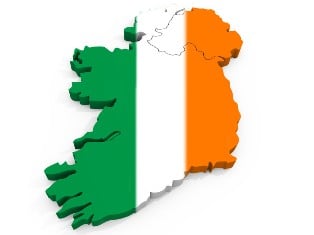
Established onshore in Europe, it had a low tax (was 10 percent now 12.5 percent). After starting slowly in Dublin's Docklands, Ireland relaxed employment requirements, and captives started moving in. US tax treaty meant no Federal excise tax on US-origin premiums. But Ireland was subject to Solvency II.
1995

First Web portal dedicated to the captive insurance industry is launched by John Foehl, John Salisbury, Dan Labrie, and Chris Mancini. IRMI is now the owner and publisher.
An asset manager for many captives, though it failed, none lost anything. The lesson was that even big-name asset managers are not risk free.
1996
"Should You Close Down Your Captive?" The man who published the first book on captives gave a historic speech with 10 negatives. He later backpedaled. "It was to show how to counter the negatives," he argued. But too late—he was known forever after by that one speech.
1997

3,800
3,417
per Captive Insurance Directory (3800) and Business Insurance (3417). The variation illustrates how the different timing and sources of information on captives gives widely differing estimates. Premiums estimated at $18 billion.
This made Marsh the largest captive management company. In 2016, Marsh managed some 25 percent of identified captives.
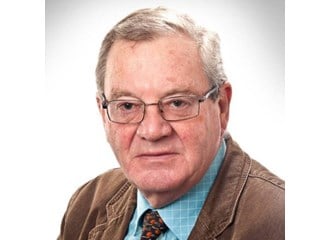
Passed in Guernsey by Steve Butterworth. Although rent-a-captive structures had been used long before that, their cells were segregated by contract or by private act. In the new protected cells, they were protected by statute. Bermuda's similar enabling legislation followed in 2000.
They began to attract a great deal of attention, even though limited to 50 percent of captive's total premium written. Not many formed, and by 2016, only about 75–80 are reinsuring global benefits and 30 reinsuring US benefits.
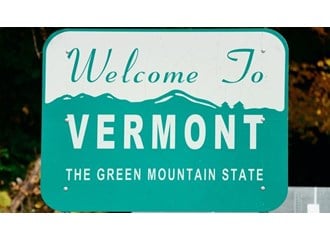
"Controlled unaffiliated business" permitted in captives. While this was important for onshore domiciles, for offshore domiciles, unrelated business had never been restricted.
In spite of soft market, almost 300 new captives formed, mainly offshore and single-parent. And 300-plus more formed in 1998, when there was a big increase in non-US ownership.
1998

3,417
Captive Insurance Company Directory estimated premiums were $18 billion, showing an example of how the different timing and sources of information on captives gave widely differing estimates.
Authorized in Cayman for property catastrophe bonds, all offshore domiciles now facilitate SPVs, many onshore ones, too. These are not strictly captives, but are often counted as such.

Statements that 80 percent of Fortune 500 companies owned a captive are dispelled by rigorous count conducted by CICR, revealing it’s only 48 percent.
Only one did, though. Main reason for lack of success was the required participation in Lloyd's regulations and security fund.
1999

3,624
Business Insurance estimated that premiums were $21.3 billion.
These have a major effect on reinsurance capacity.
Impact report revealed $11 million direct income to the state plus an additional $22 million in direct and indirect taxes.

4,135
Captive Insurance Company Directory estimated that premiums were $21.3 billion.

UPS v. Commissioner, 78 T.C.M. (CCH) 262 (1999), upheld separate entities but denied deductibility of premiums. UPS won appeal in 2001. Experts pointed to importance of arm's-length pricing and business purpose arguments. In the small print, deductibility was allowed but only for market rates. Deductibility for egregious excess rates was disallowed.
2000

4,250
per Captive Insurance Company Directory
More and more captive publications appeared in the 21st century, mostly with advertising and "sponsored" articles.
Established in response to increased restrictions of US fronting companies and championed by the indefatigable Brian Donovan, this survey shed light on fronting practices and charges, and what services to expect from them. It went on until 2014 when fronting was no longer such a problem, and morphed into a captive program and practice survey.
Created by the Organisation for Economic Co-operation and Development (OECD), it listed those requiring a tax regulation "upgrade." It resulted in continuing assessments by the International Monetary Fund (IMF) and other blacklists, leading to an increase in regulation and an increase in offshore captive costs.

This was allowed for Columbia Energy. It took years of wrangling, but Bruce Wright persevered, opening the door for others to reinsure their US employee benefits into US captives.
2001

4,300
According to Swiss Re, there were $38 billion in premiums, another example of widely differing estimates of premium volume.
In Rev. Ruling 2001–31, the IRS states that it will no longer invoke the "economic family" doctrine. It took 10 years after the IRS lost several tax cases for it to admit its faulty position.

In self-procurement tax case Dow Chem. v. Rylander, 38 S.W.3d 741 (Tex. App. Austin 2001), Dow Chemical won, but the case only applied to narrow facts and circumstances. State Bd. of Ins. v. Todd Shipyards, 370 U.S. 451 (1962), was the case cited. It could have been a prelude to captive owners resisting demands by states, but it didn't pan out that way. It is still a powerful argument for non-admitted coverage avoiding self-procurement taxes, but rarely invoked by timid captive tax advisers.
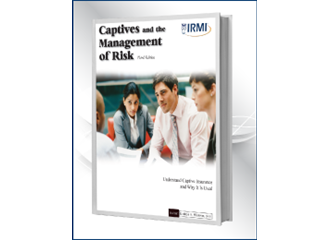
The first of Kate Westover's two comprehensive tomes published by IRMI that became the main text for training captive managers: Captives and the Management of Risk and Captive Practices and Procedures. Bermuda always had training materials for locals. Several broad-based captive training programs developed since then, but the International Center for Captive Insurance Education (ICCIE) training program using this text still remains.
There was a major detrimental effect on reinsurance capacity. The US government eventually established a federally funded terrorism backstop (TRIA) that led many captive owners to use their captives to access it.
2002
No other captive association has such a paid full-time position. Dennis Harwick set about enlarging the image and activities, including lobbying and information resources. He will retire in 2017.

4,526
Per Best's Directory, 462 new captives were licensed, with a hard market driving new formations.
They increased paperwork and costs for US captives and their owners. They also posed a serious challenge for captive owners. Captive managers geared up and eventually adapted.
A pioneer of the small-company self-managed group captive, STICO successfully managed the risks of leaking underground storage tanks to return consistent results in spite of high (55 percent some years) expense ratios, mainly for in-house engineering surveys. Its eventual switch away from fronting is symbolic of the development of captives back to their do-it-yourself origins.

The state becomes third in importance behind Bermuda and Cayman with 500 licensed captives in the state.
These rulings set a 50 percent unrelated business threshold, the numbers of entities for a captive's income to be considered "insurance," and clarified risk distribution (for a while). They also set 12 as the minimum number of brother-sister related entities. For group captives, they established that seven is the sufficient number. The 50 percent unrelated business test spurred interest in employee benefits (deemed unrelated business) in captives. Number of entities confirmed by Rev. Ruling 2005-40.
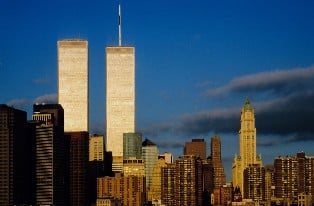
The US government establishes a $100 billion backstop for terrorism losses. The Act looked attractive to captive owners because only insurance companies (including captives) were eligible. Some captives were formed specifically to access TRIA. While TRIA access, not tax, drove the formations, many developed into full-fledged captives adding conventional perils. Treasury, while disappointed with its impact on conventional capacity, in this roundabout way supported captives as it added capacity to the market.
Discussions began, and the European Captive Insurance and Reinsurance Owners' Association (ECIROA), a captive lobbying group, was set up to try to gain exemptions for captives. The association was designed to make insurance regulation a "level playing field," at least in the European Union (EU). Captives were swept in as insurance. Discussions dragged on for almost 15 years, with captive owners at first keeping quiet, and then, too late, trying to get carve outs or special proportionality provisions, which didn't succeed.
This was a comprehensive improvement over Generally Accepted Captive Standards (GACS) (1987). Their most important one was risk retention to surplus, admitting that captives' ratios are usually higher than commercial insurers' (25–50 percent for single-owner captives, per GACS).
Loss ratios were getting worse and worse for commercial medmal liability insurers. As the medmal market hardened for the third time, this exit encouraged formation of many new captives. MLMIC (not a captive but a mutual) followed too. So did PHICO, a captive turned commercial insurer. Eventually captives and mutuals went on to write an estimated 70 percent of total medmal premiums.
2003

4,515
per Business Insurance
2004
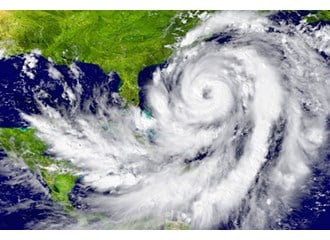
Four Florida hurricanes and then Hurricane Katrina had a major effect on reinsurance capacity. Even more capital went to alternative reinsurance facilities. But, before the long soft market this engendered, traditional insurance rates spiked and more captives were formed.
Puerto Rico is onshore for regulatory purposes but offshore for tax purposes. The effective tax rate on underwriting and investment income of captives domiciled there is 4 percent or 0, depending on the structure, but premiums are still subject to federal excise tax until a proposed relief is implemented by the Internal Revenue Service. It took another 5 years before Puerto Rico "took off" as a domicile. In 2016, there were about 350 captives and cells, most of them micro-captives, domiciled there.
International Center for Captive Insurance Education (ICCIE) begins training programs in Vermont, becoming the largest captive insurance training program with 450 graduates and 1,200 in the pipeline as of 2017.
2005

4,881
per Business Insurance

Per A.M. Best, 561 new captives were licensed. Although 360-plus were closed, the number of new formations in a year appeared to reach its highest number ever. Nevertheless, Business Insurance reported a slowdown because net increase was down a bit. Skeptics, like Roger Gillett in Bermuda, reworked the figures to come up with fewer than 300 new licenses. This confusion finally showed those in the industry what they had thought for a long time: there are no reliable captive number "statistics."

He received the Vermont Captive Insurance Association's (VCIA) highest award for 10 years of innovative service to the captive community, mainly in the US tax areas. He also masterminded reciprocal risk retention group (RRG) structures for nonprofits. In 2008, he received CICA's highest award as well.
In 2005, Delaware modernized its insurance law more favorably for captives. In 2010, Delaware became the first domicile to begin licensing series captive insurance companies, whose business units have some attributes like cells but are licensed as self-standing captive insurers. By the end of 2015, there were 1,060 licensed entities in Delaware, of which 242 were pure captives, 740 were series captive insurers, 50 were special purpose vehicles, and there were 8 others. Steve Kinion, director, Bureau of Captive and Financial Insurance Products, Delaware Insurance Department, is recognized as one of the leading advocates for the captive insurance industry.